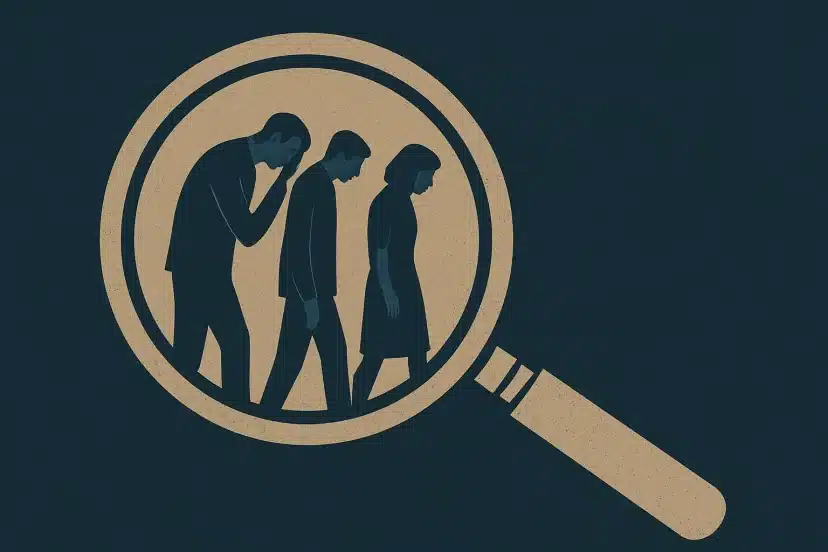Understanding Functional Unemployment in America’s Economy
The Hidden Unemployment Crisis in America is deeper than most realize. While the latest Bureau of Labor Statistics report shows the official unemployment rate holding steady at 4.2%—a near 50-year low—this widely cited figure fails to capture the true economic struggles of millions of Americans. According to groundbreaking research from the Lewig Institute for Shared Economic Prosperity, nearly one in four Americans (24.3%) are considered functionally unemployed.”
Table of Contents
What Is Functional Unemployment?
Functional unemployment encompasses not just those without jobs, but also includes:
- People struggling to find full-time employment
- Workers trapped in poverty-wage positions
- Individuals unable to earn enough to meet basic needs
This more comprehensive measurement reveals a stark contrast to the rosy picture painted by traditional unemployment figures.
The Growing Economic Opportunity Gap
The Lewig Institute’s “True Rate of Unemployment” report highlights that the Hidden Unemployment Crisis remains a significant challenge, with functional unemployment stubbornly above 24% since February and rising slightly to 24.3% in April. This persistent trend reveals deeper structural problems within the labor market, underscoring the ongoing Hidden Unemployment Crisis facing millions of Americans.
As the Hidden Unemployment Crisis deepens, it reflects widening economic disparities and a labor force struggling to find stable, well-paying jobs, despite official unemployment numbers suggesting otherwise.
“The harsh reality is that far too many Americans are still struggling to make ends meet. And absent an influx of dependable, good-paying jobs, the economic opportunity gap will widen,” warns the institute’s chair.

The Minimal Quality of Life Threshold
A separate analysis by the Lewig Institute determined Americans need to earn at least $67,000 annually to achieve a minimal quality of life. This threshold accounts for:
- Basic necessities (food and shelter)
- Education expenses
- Transportation costs
- Clothing and other essential needs
Many functionally unemployed Americans fall far short of this income level, creating significant financial strain.
Why Traditional Unemployment Metrics Fall Short
Traditional unemployment statistics from the Bureau of Labor Statistics focus primarily on those actively seeking work but unable to find any employment. This methodology fails to capture:
- Underemployed workers (part-time seeking full-time)
- Discouraged workers who’ve stopped searching
- Employed individuals earning below-poverty wages
By excluding these vulnerable groups, official statistics create an incomplete picture of American economic wellbeing.
The Impact on Communities
Communities with high functional unemployment face numerous challenges:
- Decreased consumer spending
- Reduced tax revenue
- Increased reliance on social services
- Higher rates of housing insecurity
These effects can create a downward economic spiral that’s difficult to reverse without targeted intervention.
Solutions to Address Functional Unemployment
Addressing functional unemployment requires a multifaceted approach focusing on job quality rather than just job quantity. Potential solutions include:
Workforce Development Initiatives
- Skills training programs aligned with growth industries
- Educational pathways for in-demand careers
- Apprenticeship opportunities in trades and technical fields
Policy Considerations
- Living wage standards
- Expanded earned income tax credits
- Affordable childcare to enable workforce participation
Understanding Economic Indicators Beyond Unemployment
To truly gauge economic health, policymakers and economists must look beyond traditional unemployment figures. Additional metrics that provide context include:
- Labor force participation rate
- Wage growth across income quintiles
- Job quality measurements
- Cost of living indicators
These data points, when analyzed together, offer a more comprehensive view of economic wellbeing than unemployment figures alone.
FAQ: Functional Unemployment
What Is Functional Unemployment?
Functional unemployment goes beyond traditional joblessness. It reflects a broader labor challenge capturing people who may technically have jobs but lack income stability, benefits, or sufficient working hours. In contrast, the official unemployment rate only counts people actively looking for work.
This wider lens helps expose the Hidden Unemployment Crisis behind the polished statistics.
Why Is the Real Job Crisis Being Overlooked?
Many new jobs created today are part-time, low-paying, or temporary. While they help reduce the official unemployment rate, they don’t provide a livable income or job security. As a result, the true scale of economic struggle remains hidden.
Experts argue this leads to a false sense of recovery masking real hardship under inflated job growth numbers.
How Does Functional Unemployment Impact the Economy?
The Hidden Unemployment Crisis has far-reaching consequences for the broader economy. High levels of functional unemployment reduce consumer spending power, as millions of underemployed workers struggle with limited incomes. This drop in spending slows business growth and dampens demand across industries.
Additionally, more families become dependent on government safety nets, increasing public spending and straining welfare systems. The long-term result is weakened economic growth, rising income inequality, and a labor market where opportunity is unevenly distributed.
By masking this crisis behind low official jobless rates, policymakers risk underestimating the true scale of economic instability across the U.S.
What can individuals do if they are experiencing functional unemployment?
If you’re functionally unemployed, consider investing in skills development in high-demand fields, seeking career counseling, exploring opportunities through job platforms like WhatJobs, and connecting with community resources that support career advancement and better paying positions to reduce functional unemployment.




